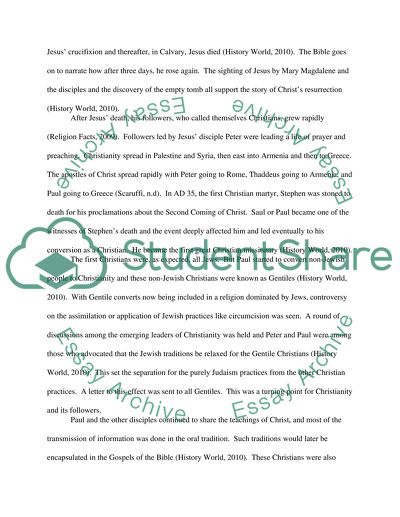Cite this document
(“Development of Christianity from the time of Jesus to its acceptance Essay”, n.d.)
Retrieved from https://studentshare.org/miscellaneous/1566662-development-of-christianity-from-the-time-of-jesus-to-its-acceptance-as-the-official-religion-of-the-roman-empire-in-the-370s
Retrieved from https://studentshare.org/miscellaneous/1566662-development-of-christianity-from-the-time-of-jesus-to-its-acceptance-as-the-official-religion-of-the-roman-empire-in-the-370s
(Development of Christianity from the Time of Jesus to Its Acceptance Essay)
https://studentshare.org/miscellaneous/1566662-development-of-christianity-from-the-time-of-jesus-to-its-acceptance-as-the-official-religion-of-the-roman-empire-in-the-370s.
https://studentshare.org/miscellaneous/1566662-development-of-christianity-from-the-time-of-jesus-to-its-acceptance-as-the-official-religion-of-the-roman-empire-in-the-370s.
“Development of Christianity from the Time of Jesus to Its Acceptance Essay”, n.d. https://studentshare.org/miscellaneous/1566662-development-of-christianity-from-the-time-of-jesus-to-its-acceptance-as-the-official-religion-of-the-roman-empire-in-the-370s.


